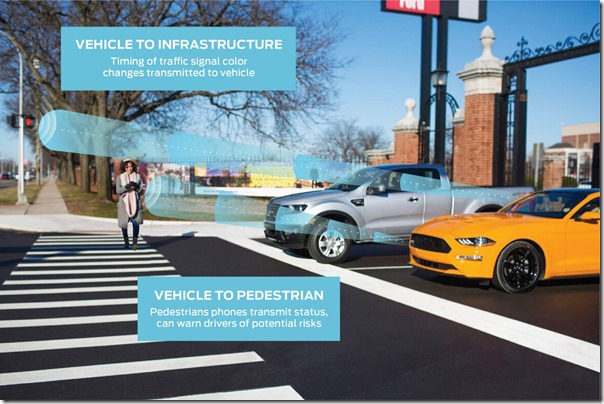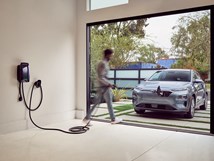What’s C-V2X?
While you might not think about Ducati, Ford and Audi in the same context (OK, they all provide vehicles, but there are differences between motorcycles, mass market vehicles and premium products) but the three companies were literally—or perhaps that should be digitally—linked together via C-V2X technology from Qualcomm.
#electronics
While you might not think about Ducati, Ford and Audi in the same context (OK, they all provide vehicles, but there are differences between motorcycles, mass market vehicles and premium products) but the three companies were literally—or perhaps that should be digitally—linked together via C-V2X technology from Qualcomm.
C-V2X? That’s “cellular vehicle to everything.”
It a demonstration orchestrated at the 2019 CES, the vehicles were equipped with the Qualcomm 9150 C-V2X chipset. Then the vehicles cooperatively negotiated the right of way in a four-way, non-signaled intersection.
And “everything” doesn’t just mean other vehicles. People, too. Pedestrians and bicyclists tend to carry smart devices, so were those to be linked into the system, it would be possible for vehicles to detect where they are in space.

As Ford’s Don Butler, executive director, Connected Vehicle Platform and Product, put it, “Imagine a person suddenly steps into the street from out of view and your vehicle stops because it was alerted by that person’s smartphone. This is just one example of how C-V2X can connect smart vehicles to a smart world.”
In addition to which, the roadway infrastructure can be outfitted with the equipment to provide information to drivers.
Ford has announced that every model it releases will have conventional cellular connectivity by the end of 2019. And Ford Co-Pilot360, its safety suite package, which is being deployed in North America on new passenger cars, SUVs and trucks, works with C-V2X.
Remember: that “C” is cellular.
So as 5G cellular networks roll out, C-V2X will be even more enhanced by the improved network.
According to Butler, Ford will start deploying C-V2X in all of its new U.S. models by 2022.
“We invite other automakers, governments and tech companies to join the significant momentum building for a C-V2X ecosystem,” said Butler.
While that might be a bit of an exaggeration, the more vehicles that are communicating with one another—as well as with, well, everything else—the better off the whole vehicular travel system will be.
RELATED CONTENT
-
GM Develops a New Electrical Platform
GM engineers create a better electrical architecture that can handle the ever-increasing needs of vehicle systems
-
On Military Trucks, Euro Car Sales, Mazda Drops and More
Did you know Mack is making military dump trucks from commercial vehicles or that Ford tied with Daimler in Euro vehicle sales or the Mazda6 is soon to be a thing of the past or Alexa can be more readily integrated or about Honda’s new EV strategy? All that and more are found here.
-
FCA Opens the Door to The Future
FCA introduced a high-tech concept vehicle today, the Chrysler Portal, at the event previously known as the “Consumer Electronics Show,” now simply CES.


.jpg;width=70;height=70;mode=crop)






